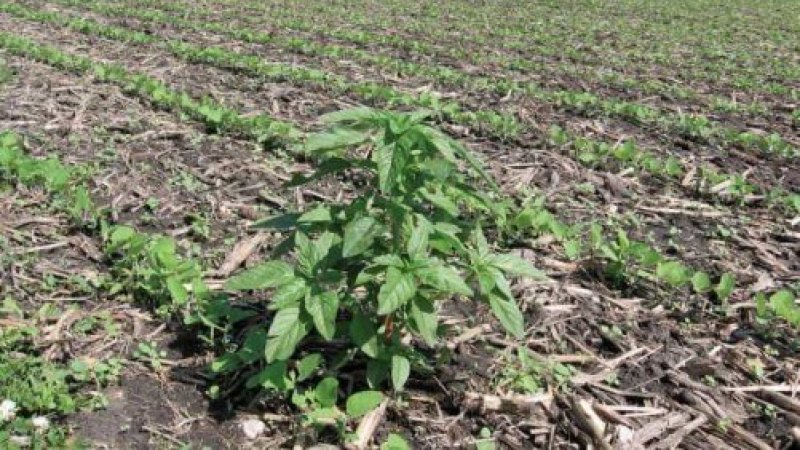The weed that represents the biggest threat to Midwestern corn and soybean production, waterhemp, has outsmarted almost every kind of herbicide on the market today.
University of Illinois scientists are working to reveal waterhemp’s tricks. Through years of research, they discovered the weed can ramp up production of detoxifying enzymes that neutralize certain herbicides before they can disrupt essential cellular processes. Metabolic resistance, as this strategy is known, is just one process by which waterhemp evades herbicides. Unfortunately, because there may be hundreds of detoxifying enzymes involved, metabolic resistance is hard to identify and even harder to combat.
In two recent studies, Illinois researchers explain metabolic resistance to three commonly used herbicides in waterhemp, getting closer to finding important genetic cues. Results also confirm the importance of using a multi-pronged approach to waterhemp control.
“These waterhemp populations are adapting and evolving incredible abilities to metabolize everything. It’s bad news, but at least we understand the mechanisms better. And ultimately, that understanding could potentially be exploited to use waterhemp’s metabolic arsenal against itself,” says Dean Riechers, professor in the Department of Crop Sciences at Illinois and co-author on both studies. “That’s one interesting way our research could be directly applied to controlling this weed.”
…
Experts say there are no new herbicide sites-of-action coming into the marketplace, so farmers will need to consider alternative methods of weed control.
“With metabolic resistance, our predictability is virtually zero. We have no idea what these populations are resistant to until we get them under controlled conditions. It’s just another example of how we need a more integrated system, rather than relying on chemistry only. We can still use the chemistry, but have to do something in addition,” says Aaron Hager, associate professor in the Department of Crop Sciences at Illinois and co-author on the Pest Management Science study. “We have to rethink how we manage waterhemp long term.”
































